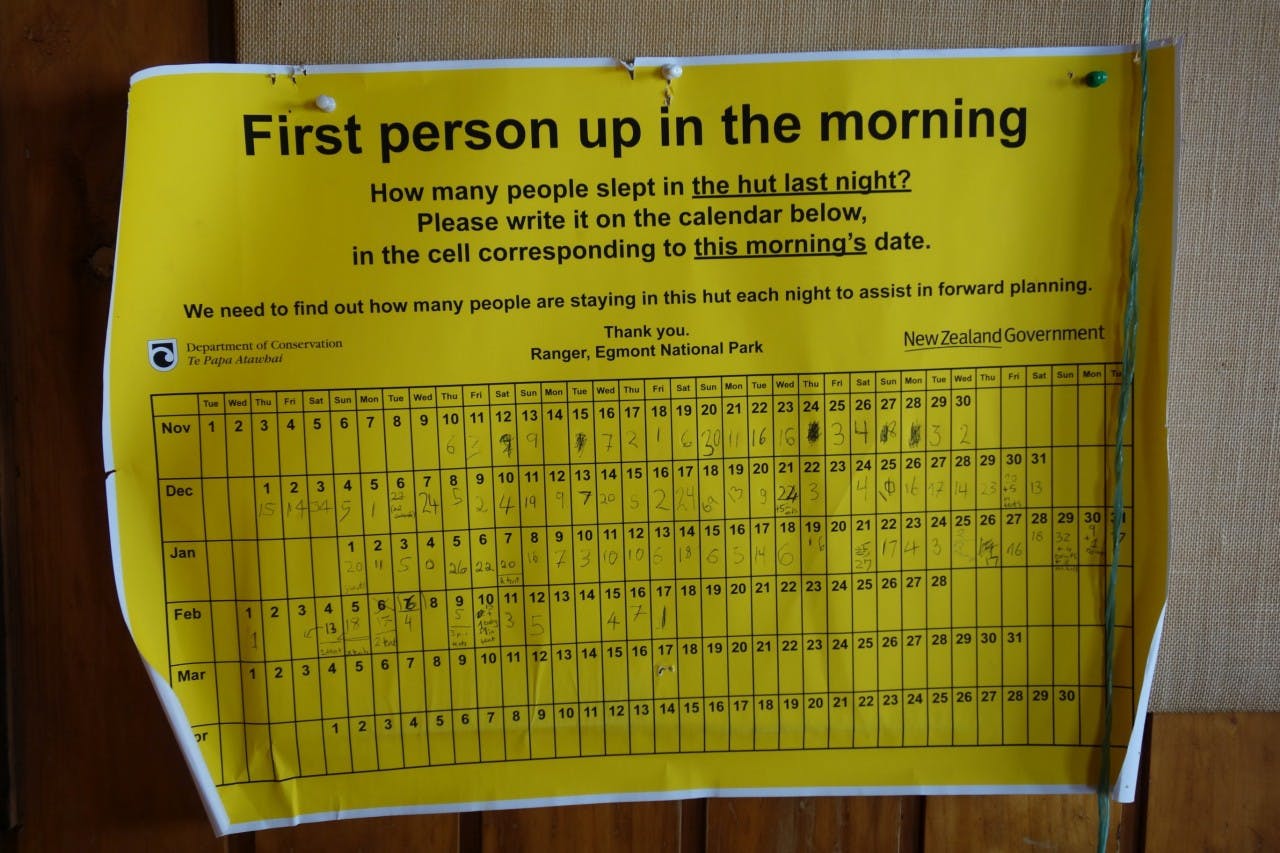A few DOC offices around the country are using a clever method for collecting information about hut use.
Known as occupancy calendars, they are bright yellow notices posted in huts, asking the first person up in the morning to write down how many people slept in the hut that night.
Dave Rogers, senior ranger from Egmont National Park, started using them five years ago on the Pouakai Circuit. He got the idea from a ranger in Tongariro, who heard about it from a DOC office on the South Island.
During peak periods, the calendars are put up in Holly Hut and Pouakai Hut.
“It’s giving us better information as to how many people are actually in the huts. And from that we can determine whether the huts are fit for purpose anymore; whether we’ve got more people staying there than the hut can realistically accommodate,” Rogers said. “You could have a 16-bunk hut and end up with 20 or 30 people consistently using it.”
While they now have several years’ worth of information, they haven’t yet analysed the usage to make any changes.
Rogers said the calendars are far more helpful for recording bed nights than hut books.
“Hut books are just a waste of time in terms of collecting information. They’re valuable for search and rescue, but there’s not much retrieved from them because half of them end up as firelighters in the huts, or for keeping scores for card games,” he said.
While the calendars help DOC know actual bed nights, the numbers also show them that people still aren’t always paying their hut fees. Rogers said the noncompliance rate is about 30 per cent.
“The whole idea of the hut ticket system was to be self-policing, unfortunately, people don’t really want to confront people about that. And maybe this is just a way they can do it in a less confrontational way.”







